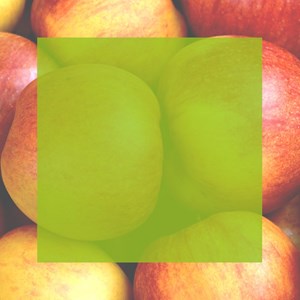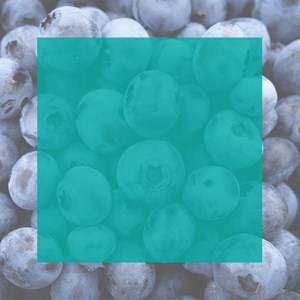JERSEY FOODSTATE NEWSLETTER SERIES
THE CASE FOR FOODSTATE
NATURAL FORM VITAMINS
AT JERSEY FOOD STATE WE PROMOTE THE "FOOD STATE" CONCEPT OF NUTRITION, BUT WHAT ARE THE ESSENTIAL DIFFERENCES BETWEEN FOOD STATE, AND WHAT WE REFER TO AS THE "CHEMICAL" VARIETIES OF VITAMINS AND MINERALS. PERHAPS A MORE IMPORTANT QUESTION IS WHY SHOULD WE TAKE FOOD STATE IN PREFERENCE TO ALL THE OTHERS.
LET’S BREAK IT DOWN:
Q: Is there a meaningful difference between natural and synthetic vitamin supplements today?
A: At molecular level, no. They both contain purified, "free state" (not food state"!) nutrients. BUT, and this is the important bit: These are nutrients that would never appear in this isolated form in nature, and anything that we consume that does not exist in nature is unrecognizable as beneficial to the body.
Q: Are vitamins in foods different at all from USP (United States Pharmacopeia) chemical grade vitamins?
A: Absolutely. In foods the molecules are always bound to proteins, at the very least.
Q: Isn’t there even one brand whose vitamins are completely different from the rest?
A: Yes, there is. Jersey Foodstate’s vitamins are bound up with proteins and other constituents as they are in food, which the body is designed to fully utilize.
Q: Is this a more reasonable and supportable definition of natural?
A: Yes. And this dramatic difference can be explained.
So as not to get confused between "free state" and "food state", free state should be viewed as negative because it never exists in nature, and food state should be considered positive because the nutrients are presented in the exact same form that they would be in nature
Consider these facts before considering which vitamins and minerals you should take
Natural vs. Synthetic - is there a difference between natural and synthetic vitamins? The FDA, Linus Pauling institute and many scientists will generally say no. Jersey Food State agrees when you refer to only the molecule itself. For example, a pure ascorbic acid molecule is by chemical definition the same no matter where it came from: an orange or a factory. However, nature never supplies us with pure vitamin molecules!
Natural Form - in our natural foods (plants and animals) vitamins never exist in a free state (without the necessary food co-factor attachments). As with minerals, plants only contain vitamins bound to proteins and other co-factors. Carbohydrates, essential fatty acids, lipids and bioflavonoids are also closely associated and/or attached, but most important are the proteins as only they transport vitamins in living systems. Therefore, when recommending to clients a natural (Food State) supplement, it is the form of the vitamin with which you should be concerned, not the source or the base. And that form must be protein (and other co-factors) to be considered natural.
Free State Vitamins - Most vitamins on the market today, whether labeled natural or not, are in an un-natural free state. Remember, natural source is not good enough; the form has to be natural. If a natural source vitamin has the essential co-factors removed until it’s a pure molecule, it may as well be synthetic; in fact compared to real foods it is. By definition therefore, it is justified to call these so-called "natural" supplements synthetic. Very few "natural" brands of supplements have ever been shown to be chemically different from "synthetic" because there is no difference. In fact, irrespective of the brand name, the isolated components in nearly all vitamin and mineral supplements in the world, and manufactured by a handful of multi-nationals. The name on the label is fairly irrelevant – they are all the same.
Natural Form Vitamins. Jersey Foodstate produces vitamins, minerals and important trace elements combined with these necessary proteins, with close associations (or complexes) to carbohydrates, essential fatty acids and natural form bioflavonoids.
Free State vitamins, minerals and other supplements are without the necessary co-factors and are significantly less expensive. It is necessary to remind our clients that the Jersey Foodstate supplements are complexes. No matter how much free state vitamins and minerals are given they can’t perform as FOODS within the body because they are not foods.
- As is the case, it is not the quantity that matters but the effectiveness of the FOOD supplement.
- Food State has been demonstrated to be more effective in many studies with much less toxicity (if any).
- I rather like to think that the difference can be likened to a person explaining the directions in a language that is foreign to us; it does not matter if it is one person explaining the directions or 250, without the interpreter (the food co-factors) there is little value because we will not be able to recognise the language or the directions to our destination.
- It is no good getting the mega-dose horse tablet either, as he also speaks a language that our gut can’t understand.
- Both food and indeed our gut require these coded directions to the correct nutrient destination, and without these we are nutritionally lost.
So in summary, if we can all agree that "nature provides", then the nutrients we introduce in to the body must be in a form that the body recognises and can use, and not in a form that the body will treat as "chemical". It is principally for this reason that the Jersey Foodstate supplements are far safer and more effective than those that line the shelves of health stores, pharmacies and supermarkets.
Why supplement?
It is interesting to note that in a time of wide variety and food availability, nutritional deficit is made plain by the physiological complaints we are suffering. It is now common practice and big business to supplement the diet with macro and micro - nutrients such as vitamins and minerals. But to what avail?
The validity of taking dietary supplements has recently been seriously challenged, due to frequently high dosage levels and apparent side effects. It has also been suggested, no doubt quite appropriately, that we should be able to gain all our required nutrients from the diet we consume. Unfortunately, however wise a notion, our desperately over farmed, under nourished soil can no longer provide all the nutrients we need through the food we eat. What then?
If we are to supplement this dietary shortfall with vitamins and minerals, which ones should we take, in what quantities and why?
It is of interest to note that from many published reports regarding nutrition there is a common theme which is, that with our dietary intake today, we do not receive the nutrients from the soil compared to sixty years ago. There are several factors that we need to be aware of that contributed to this mineral decline, which include acid rain and other detrimental farming practices.
It is interesting to note the comments from an important report from the 1992 summit.
Earth Summit report from Rio in 1992 by the US Senate 26 commented that:
Earth Summit Report on Soil Mineral Depletion Analysis Concluded, that the mineral depletion for the countries below was significant, as indicated by these reductions:
North America 85%
South America 75%
Europe 72%
Asia 76%
Africa 74%
Australia 55%
This was 15 years ago, and we can only assume that it has become worse since.
Let’s consider the implications of these mineral deficiencies in the soil, and as an example, look at magnesium.
Approximately 300 bodily enzymes require magnesium to function correctly. A serious deficiency would suggest that the magnesium which is vital for most cells and tissues of the body is not available to allow the cells to function correctly.
Food processing also reduces the amount of this important mineral, for example
- 99% of the magnesium in sugar cane is lost when it is refined to white sugar.
- 80 - 96% of magnesium content in wheat is removed when refined to white flour.
- The Asian diet, which is whole-food based, typically provides 500 - 700 mg of magnesium per day, while the Western diet provides one-third that amount.
- Consumption of soft drinks (pop or soda) decreases the body’s absorption of magnesium
- The typical high-dairy/high fat diet contains almost four times as much calcium as magnesium.
- Magnesium deficiency is associated with periodontal disease
- The unbalanced dietary intake of high calcium coupled with the high fat content tends to suppress magnesium absorption.
- Alcohol promotes magnesium loss, as do diets high in animal protein, sugar, sodium, and calcium. A variety of cardiac arrhythmias have been associated with magnesium deficiency.
Free State, or Food State ?
There are no shortages of dietary supplements on the market, however, the majority fall into the category of "free state" products. We call these "de-natured". The remaining category of "Food state" products on the other hand, are the active macro and micro – nutrient, bound together within the natural food matrix which most closely supports it. We call these "re-natured".
Phosphorylation
An essential factor to consider in the bioavailability of any nutrient to the body is the presence of phosphorous. Nutrients are present in the body in a large variety of phosphorylated forms which are needed for energy, and enzyme activation and control, without which the essential energy required to maintain life cannot be released from the foods. If you remove the active nutrient from its food matrix, as in "free state", you remove it from its natural state of Phosphorylation. This increases the likelihood that the unrecognisable nutrient molecule will be treated as alien by the body and excreted, or, even if it is accepted, (and this may be less than 20% likely), it will be unable to activate the necessary chemical processes to be of any use.
In contrast, "Food state" naturally contains the necessary phosphorylated molecules (sugars and proteins, lipids, etc.), which are available to be assimilated, or processed during digestion, into the specific protein, or peptide forms, which the blood supply can transport to the designated organs for use. Note then, that "free state" products are largely unavailable for metabolism during digestion, and are therefore largely excreted. Whereas "Food State" products are highly bioavailable, and can even be stored in the tissues and intra-cellular fluid, because they contain all the appropriate passwords for the body to give them access.
"Food State"; a natural model
This whole contrast hinges on the access between the "de-natured"/"re-natured" quality of the vitamins and minerals concerned. "Food state" is so successful in terms of efficiency, because it emulates food’s natural processes. This is reflected in the way it is made, following natural holistic models, which differ (as they do in nature) according to whether they are a vitamin, or a mineral product.
Food State Vitamins: How are they produced?
The active vitamin is "fed" into the most suitable plant medium for it; that is, the most suitable plant matter with the enzymes to digest it fully. For example, citrus pulp is used for the re-naturing of ascorbic acid, because it is naturally so high in vitamin C; carrot pulp is used with Beta Carotene; alfalfa with Vitamin K, and so on. The enzymes naturally present in the various mediums integrate the vitamin so thoroughly, that it is once again fully incorporated into a food matrix.
Minerals
We know inorganic, mineral substances cannot be manufactured within the body, but must be absorbed into our bodies through the food chain. That is to say, through the plant, or the animal which has eaten the plant, which contains the necessary mineral substance. Hence, "Food State" feeds the inorganic mineral into living plant cells, which absorb them, re-naturing them once again into a fully bonded food matrix.
Both the vitamin and mineral products are harvested, freeze dried and tabletted, following a strictly monitored procedure, to ensure that nothing, (e.g. heat, or pressure during manufacture), can interfere with their availability to the body’s natural digestive processes, thus providing the body with an eminently bioavailable form of supplementation.
Low Dosage
The improved response rate and tolerance rate resulting from this enables a considerable reduction in the level of intake. This is due to the fact that the other ingredients contained within the food matrix protect and carry the "food state" vitamins and minerals through the chemical interactions which would eradicate the usefulness of their "free state" counterparts. For example in "free state", vitamin E and Iron cannot co- exist because they negate one another. In the "food state" however, they remain part of a complex structure and are therefore not available for chemical interchange. This means, that unlike "free state", "food state" can be taken without being accompanied by food, because, being bonded to lipids, carbohydrates, and bioflavonoids, they are already a ’whole food’ in themselves.
Non-allergenic
Due to their bio-available status, and hence their low dosage requirements, there are no side effects to Food State products. Despite the use of yeast during the mineral bonding process, "Food State" products are non-allergenic. Allergies are always molecule specific and in order to stimulate the yeast allergy, the yeast must still be in possession of its long chain molecules. During the bonding process, the yeast is enabled to "take up", and re-nature the mineral substance into itself, prior to the breakdown of the yeast cell wall. This makes it unrecognisable as a yeast molecule and it does not therefore trigger off the allergic response. It is also worth noting, that because "Food State" products are retained in the body longer, and are more efficiently utilised, there is no risk of any detrimental mineral depositing, or symptoms of overdosing.
Conclusion
Through the large and available body of research work that has been carried out to explore the efficacy of these divergent forms of supplementation, it has become clear that Food State supplements are better absorbed, utilised and retained in the tissues, than any other form of supplements.
How do we obtain our fundamental nutritional needs through supplementation?
With regard to a basic health plan, there are 4 significant supplements to consider: Magnesium, Selenium, Anti-oxidant and the Multi vitamin and mineral complex.
The rationale for this, is that despite the fact that many of us can be considered as The Walking Well, we are in the main, vitamin and mineral deficient. I refer to "the walking well" - those of us who are not experiencing actual illness, but who we can say, are almost certainly sub-clinically malnourished, since many reports and surveys show that today, eight out of ten people consuming "western" foodstuffs are deficient in minerals, some people more than others.
This is because acid rain leaches the macro and micro minerals out of "commercial" as well as organic soils. We can state with confidence that many of the modern day disease conditions and illnesses are the direct consequence of immune systems weakened by poor and inadequate nutrition.
They were not seen in such profusion when naturally grown whole seasonal foods were consumed. The soil today is 55-85% less nutrient-rich than 60 years ago. Even organic fruit and vegetables are 5-10 times less nutritious as they were 60 years ago, as concluded by the 1992 Earth Summit Report referred to earlier.
Proper Soil and Mineral Balance:
The importance of this cannot be overstated in terms of our health and well-being. As two-times Nobel prize-winner Dr Linus Pauling stated:
’You can trace every sickness, every disease and every ailment to a mineral deficiency.’
As long ago as 1936 the USA Senate saw the growing problem of farming and nutrition. The alarming fact is that foods (fruit, vegetables and grains) now being raised on millions of acres of land that no longer contain enough of certain minerals are starving us – no matter how much of them we eat.
The Senate report went on to say:
No man of today can eat enough fruits and vegetables to supply his system with the minerals he requires for perfect health.
Of course, we should recognize that years ago there were diseases of the immune system. However, never in our history has food been so processed refined and altered with chemicals, and never before has the immune system been so exposed to altered, refined and chemically produced foods.
Eight out of ten people will sooner or later experience the effects of specific mineral shortages. Their compromised health status will be evidence of sub-clinical malnutrition.
The evidence for nutrient depletion of the soil is extensive. As a result our food, whether we consume plants directly, or whether it is sourced from animals that have fed on plants, simply cannot provide a "healthy balanced dietary intake". Nowadays we simply cannot obtain the range and quality of nutrients we require from foods, so the choice is firstly whether or not to take supplements, and if so, secondly whether to choose Food State supplements, or the traditional chemically-sourced, so-called "natural" ones.
1. SELENIUM
Selenium deficiency is known to contribute to significant disease processes. When considering a brand, please follow this simple rule: Once you have seen the name on the front of the product, turn it round and see if under the ingredients section it again says selenium from a recognised food. The usual forms are invariably chemical isolates without any proper proteins or other co-factors to ensure delivery to the correct site within the body.
Some of these chemicals that are called Selenium (on the front of the label) are listed as the following in the ingredients list. There are about 10 chemical forms usually offered as selenium, none of which exist in foods. (None of these of course will be found in food state). L-Selenomethionine is an absorbed form of organic selenium comprised of selenium bound chemically to Methionine (i.e. Methionine that contains Selenium in place of Sulphur). This is a structure never found in Foods. Selenium Picolinate consists of Selenium bound to Picolinic Acid, which is listed as a herbicide and used in paint but is not approved in the USA as "Generally Recognised As Safe" in the USA GRAS list of suitable supplement materials for humans. Selenium chelate this form is a reasonable one but again the Food State far out performed this and all the other forms in clinical studies.
It is known that 8 out of ten persons are Selenium deficient because it is just not in the foods in adequate quantity.
Included in the health benefits of selenium, is its powerful anti-oxidant properties that help protect against and prevent atherosclerosis.
Selenium protects against heart ailments:
In fact research has shown that selenium appears to help to prevent heart attack, and is strongly recommended as a means of preventing further heart attacks in persons who have already experienced a heart attack.
Selenium has been found through research to lower blood pressure in hypertension,
This amazing mineral has been demonstrated by research to be one of the most important substances for our immune system to fight off disease, in particular cancer.
2. MAGNESIUM
Many health practitioners consider this mineral to be even more important for proper bone structure than calcium. It is known that this is one of the most deficient minerals, and that 8 out of 10 people have been found to be deficient when consuming a "western" diet even if the food is organic. Remember, the acid rain leaches out the beneficial magnesium from the soil, whether organic or not. We need magnesium for each of the estimated 100 trillion cells in our body to work properly. There are at least fifteen forms of magnesium available on the market. As a consumer, we might see 100mg of magnesium on the label but at a closer look we see it is in the form of "magnesium gluconate".
What does this mean?
Well it means it is a chemical, and this form consists of 5.3% magnesium mixed with to 94.7% Gluconic Acid. Yes that is correct 5% (5mg) magnesium not the 100mg we saw on the label.
Other forms include:
Magnesium Aspartate, comprised of 7.5 – 13% actual magnesium when the label says 100mg. The rest is aspartic acid but the label says 100mg magnesium. Alzheimer’s disease suffers commonly exhibit elevated levels of aspartic acid
Magnesium Orotate consists of 6.9 - 7.5% Magnesium bound to orotic Acid. This acid in high intake can damage the liver
These are just a very few examples of what we think we are purchasing for our health, but we are not informed about the true nature of the form the mineral exists in, as detailed on the ingredients list.
The important fact about this mineral is that it should be in small quantities, as it is in food and in the Food State supplement. Magnesium is important as we said, for every cell of the body, and importantly it modulates the electrical potential of cell membranes and maintains the proper permeability of cell membranes maintaining the proper electrical charge gradient across cell membranes. This is a very important mineral for the healthy functioning of the heart.
We need to remember that very few people get adequate magnesium intake, and substances like alcohol increases the excretion of magnesium via the urine and decreases the absorption of dietary magnesium to the cell. White sugar (sucrose) and caffeine further increase the excretion of magnesium.
Excessive calcium (as taken in many chemical forms-usually as calcium carbonate for increasing bone density) actually further depletes magnesium, as this and other chemical forms of calcium compete with magnesium for absorption in the body.
Some particular foods, such as dairy products, also reduce the body’s absorption of magnesium, as does the supposed popular health product known as bran, which adversely interferes with the absorption of magnesium. Interestingly, if bran is consumed as a whole substance, for example as wholemeal bread, this depletion of magnesium does not occur.
Lastly, and equally importantly, we have found through research that both stress and high activity exercise programs, especially endurance exercise, increases the body’s excretion of magnesium.
We need to ensure that we are taking adequate amounts of this mineral, which is so depleted in our foods compared to even 60 years ago. Fruits, nuts, legumes and sea vegetables are very good sources of magnesium, but it is sensible to supplement until we each know our own magnesium "bank" is in the black, and that we are not working with an "overdraft".
3. ANTI-OXIDANT WITH CO-ENZYME Q10
What are antioxidants?
Antioxidants are a group of very beneficial substances that "collect up" stray and potentially harmful chemicals known as free radicals.
What do they do?
The antioxidants work to remove these harmful free radicals that would otherwise attack, oxidize and damage healthy molecules in the body.
Research has shown that antioxidants retard many aspects of the aging process and indeed are considered to possess life extension potential according to many health professionals.
Some Foods high in antioxidants.
In brief, these are some of the foods that provide antioxidants: Wheat, barley, grass, plums, grapes, garlic, sesame seeds, miso and modest amounts of organic red wine.
Health benefits
The list of benefits is considerable but first a word regarding antioxidant supplements. In recent years several scientific reports have concluded that the antioxidant supplements are not as healthy as first thought. Once again, the reason is in the simple distinction between the isolated chemicals that do not exist in nature, and the natural form found in food structures.
First a brief further note regarding the chemical form (remember to look at the ingredient list). "Natural" antioxidants that are sold as chemicals are in fact a synthetic (manmade and never found in nature in this isolated chemical structure) form of antioxidants that are widely used in the manufacture of processed foods as Food Preservatives. Common sense will tell us that the same ingredients cannot be sold as a promoter of life in the form of a supplement, and a suppressor of life in the form of a preservative, which lingers in the gut.
Our food State antioxidants have been clearly demonstrated to be beneficial in helping to prevent harmful free radicals damaging our body, just as antioxidants in nature will do.
We need additional intake of antioxidants (in the best form) to help our immune system. Linoleic acid is a beneficial essential fatty acid that enhances the function of the fat-soluble antioxidants such as vitamin E. It is worth noting that the common chemical names for vitamin E are as D-alpha tocopherol or DL-alpha tocopherol. These names you will notice listed as "preservatives" on the ingredients list in high fat foods in the supermarket. Once again we see the hypocrisy of an ingredient being described as both a health supplement and a preservative at the same time.
It is worth noting that vitamin E is often in skin cosmetics as an apparent health benefit. Several of these isolated chemical forms that are legally allowed to be called "natural" vitamin E, are in fact not topically bioavailable, because the digestive enzymes absent from the skin are required for its activation. The word "digestive" explains where we find these all important enzymes that make the real vitamin E work, and it is of course in the gut, not in the skin.
The vitamin E as a Food State antioxidant is not as an isolated substance, but is within a food matrix with the necessary enzyme activators and protein to deliver it to the correct part of the body.
As a teasing thought we can factually say;
- ’Natural Source Vitamin E’ is not in a natural form and is never found in nature.
- Synthetic vitamin E is made from natural sources, but is not in a natural form.
- Real natural vitamin E in food would fail the "test" for Natural Source.
Food State vitamin E has the structure of vitamin E as found in natural food
Co Enzyme Q10
Co Enzyme Q10 functions as an antioxidant that is a vitamin-like substance that resembles Vitamin E, but which may be an even more powerful antioxidant. It is also called ubiquinone.
There are ten common co enzymes, but co enzyme Q10 is the only one found in human tissue. Co enzyme Q10 declines with age and should be supplemented in the diet. It plays a crucial role in the effectiveness of the immune system and in the ageing process, including the aging process within the brain.
4. MULTI VITAMIN/MINERAL
The Food State Multivitamin and mineral formula is a sensible supplement because it covers so many bases. The food state formula is presented within the body as a food, which is terribly important for a "multi" for the following reasons:
It is a sad reflection that today, only enlightened nutritional experts such as Earl Mindel (who wrote the Vitamin Bible, one of the biggest selling guides to supplements and their use in recent years), have spoken out regarding the isolated chemical (so called "natural") vitamins and minerals. Earl Mindel highlighted the dangers in these multi formulations because there are numerous ingredients that simply should not co-exist in this chemical form in the same tablet.
Most companies put the vitamins and minerals in the same formula, and the advice from independent nutritional experts is that (as one example) vitamin E and Iron should not be given at the same time but at least 8 hours apart when in the chemical form.
There are a lot of sound health reasons for taking these chemicals apart, for example the iron is in the form of ferrous sulphate, an inorganic form of iron known to reduce the absorption of vitamin E through the intestines. In nature, foods are found with both vitamin E and iron together, so this point illustrates once again that these chemical supplements are inappropriate for human consumption. Please remember that in food, the nutrients are always in a matrix of proteins, carbohydrates, lipids and other essential co-factors that ensure best delivery of nutrients. Indeed this is how the Jersey Food State food state multi vitamin and mineral formula exists.
The chemicals that are in the basis of most "natural" supplements will have ingredients listed on the label such as.
DL-Alpha Tocopherol Acetate
D-Alpha Tocopherol Succinate
Pyridoxine Hydrochloride
Thiamine Hydrochloride
Thiamine Nitrate
Zinc Picolinate
Zinc Sulphate
Calcium Gluconate
Sodium Selenite
Ferrous Sulphate
SUMMARY
Taking aside all the jargon like co-factors, food structures, food matrix’, isolated chemicals, etc. etc., perhaps the easiest way to picture in your mind the difference between a standard supplement, for example vitamin C, and the vitamin C in an orange, is as follows:
It is rather like a letter in so much as if we just put the person’s name, eg Joe bloggs on the envelope, it is extremely unlikely that the letter will reach the correct person. The vitamin C supplement has the same problem. Nutrients in whole foods are combined with the full address, such as the proteins, lipids, carbohydrates, etc., that ensure the nutrients will be delivered to the correct place in the body for appropriate absorption.
It is interesting that in a survey regarding food state vitamins and minerals (emulating the natural food form), consumers believed that this is what they thought they were buying when they asked for "natural" vitamins and minerals.
It comes as no surprise that in scientific studies with food state supplements, when comparing then to the various chemical forms, the food state was the form that out performed all others.
The independent researchers conclude their study with these comments.
"These results indicate that the vitamins and minerals in the food state product are much more available than the vitamins and minerals in the USP Isolate product".





